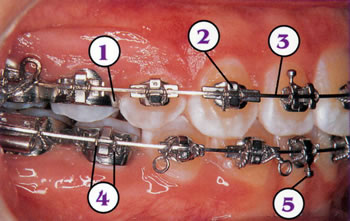5. Will my braces
interfere with playing musical instruments?
Patients who play woodwind or brass
instruments, such as the clarinet or trombone,
will require some minor adaptation to braces.
With some practice and an easy period of
adjustment, braces typically do not interfere
with playing musical instruments.
6. What is
a space maintainer?
In addition to biting and chewing,
primary (baby) teeth are very
important because they hold space for
the permanent teeth. When a primary
(baby) tooth is lost prematurely, an
orthodontic space maintainer is placed
in the mouth to hold the space
necessary for the permanent teeth that
will come in later.
|
|
7. How can a
child's growth affect orthodontic treatment?
 Orthodontic
treatment and a child's growth can often
complement one another. Studies show that
orthodontic treatment during periods of
accelerated or intensive growth can contribute
significantly to correction of teeth and jaw
problems and improvement of facial appearance. Orthodontic
treatment and a child's growth can often
complement one another. Studies show that
orthodontic treatment during periods of
accelerated or intensive growth can contribute
significantly to correction of teeth and jaw
problems and improvement of facial appearance.
Occasionally, a person who has grown normally
and in average proportion may not continue to
grow favorably. It is not uncommon for some
patients to experience multiple growth spurts,
some later in life than usual.
If growth becomes disproportionate, the jaw
positions can be affected, and the original
treatment objectives may have to be
re-evaluated or compromised. Dr. Shih will
closely monitor your child's growth and
development and inform you of any concerns as
they may arise.
|
8. |
What kinds of
orthodontic appliances are typically used
to correct jaw-growth problems? |
The process of dentofacial orthopedics allows
Dr. Shih to correct jaw growth problems. This
is often referred to as growth modification.
The decision about which appliance to use for
jaw growth modification is based on the
individual problem. Usually, one of several
appliances can be used effectively to treat a
given problem. For the majority of appliances,
patient cooperation is the critical element in
determining the success of dentofacial
orthopedic treatment. If your child would
benefit from this kind of treatment, Dr. Shih
will be happy to discuss with you which option
is best for your child.
Some of the more common orthopedic appliances
used by orthodontists today that help the
upper and lower jaws become more compatible
include:
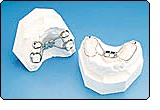 |
Expander:
A child's upper jaw
may be too narrow for the upper teeth to
fit properly with the lower teeth,
creating a crossbite. When this occurs, a
palatal or lower lingual expansion
appliance can be placed on the upper back
teeth. This appliance can markedly expand
the width of the upper jaw to make a
broader, more attractive smile. |
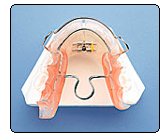 Activators:
These removable appliances hold the lower jaw
in a forward position to guide tooth eruption
into a more desirable bite while helping the
upper and lower jaws grow in proportion with
each other. Patient cooperation in wearing
this appliance is essential for successful
improvement. There are many removable
appliances used by contemporary orthodontists
to treat underdeveloped lower jaws. They
include the Twin-Block, Bionator, and Frankel,
to name a few.
Activators:
These removable appliances hold the lower jaw
in a forward position to guide tooth eruption
into a more desirable bite while helping the
upper and lower jaws grow in proportion with
each other. Patient cooperation in wearing
this appliance is essential for successful
improvement. There are many removable
appliances used by contemporary orthodontists
to treat underdeveloped lower jaws. They
include the Twin-Block, Bionator, and Frankel,
to name a few.
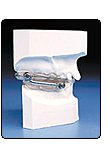 Herbst
Appliance: For patients who
have an underdeveloped lower jaw, it is
important to begin orthodontic treatment
several years before the lower jaw finishes
growth. One method of attempting to correct an
underdeveloped lower jaw uses an orthopedic
appliance to reposition the lower jaw. Like
activators, the Herbst appliance influences
the jaw muscles to work in a way that may
improve forward development of the lower jaw.
One potential benefit of the Herbst appliance
is that it is bonded to the teeth during
treatment so patient compliance is assured. Herbst
Appliance: For patients who
have an underdeveloped lower jaw, it is
important to begin orthodontic treatment
several years before the lower jaw finishes
growth. One method of attempting to correct an
underdeveloped lower jaw uses an orthopedic
appliance to reposition the lower jaw. Like
activators, the Herbst appliance influences
the jaw muscles to work in a way that may
improve forward development of the lower jaw.
One potential benefit of the Herbst appliance
is that it is bonded to the teeth during
treatment so patient compliance is assured.
Headgear:
This appliance has been used for years in
respected specialty orthodontic offices across
the country. Headgear applies selective
pressure to the upper teeth and upper jaw to
guide the rate and direction of upper jaw
growth and upper tooth eruption. The headgear
may be removed by the patient and is usually
worn only at night.
In some cases, Dr. Shih will recommend
patient to go for corrective Orthognathic
surgery treatment or other cosmetic procedures
to achieve the desired result.
9. Why does
orthodontic treatment sometimes last longer
than anticipated?
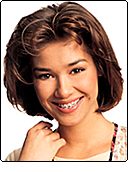 Each
patient is a unique individual and estimates
of treatment time can only be that- estimates.
Patients grow, mature, and get their permanent
teeth at different rates and will respond in
their own individual ways to orthodontic
treatment. Rest assured that Dr. Shih has
specific treatment goals and objectives in
mind and is dedicated to continue treatment
until they are achieved. The estimated time of
treatment is usually very close to the actual
treatment time. Each
patient is a unique individual and estimates
of treatment time can only be that- estimates.
Patients grow, mature, and get their permanent
teeth at different rates and will respond in
their own individual ways to orthodontic
treatment. Rest assured that Dr. Shih has
specific treatment goals and objectives in
mind and is dedicated to continue treatment
until they are achieved. The estimated time of
treatment is usually very close to the actual
treatment time.
The length of treatment largely depends on the
severity of the initial problem, the patient's
growth pattern, and the level of patient
cooperation. Patient cooperation is the single
best predictor of staying on time with
treatment. Patients who cooperate by wearing
rubber bands or other needed appliances as
directed, while taking care not to damage
braces will most often lead to on-time and
excellent treatment results. However,
treatment can be lengthened if growth occurs
differently than expected or if the patient's
cooperation is less than ideal. Inability to
keep appointments, excessive tardiness, poor
appliance wear, and excessive breakage can all
extend treatment time.
10. What are
retainers?
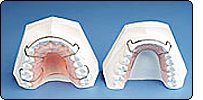 When
your braces are removed, you will need to wear
a device called a "retainer" to hold your
teeth in their new position. You will wear
your retainer for as long as it takes your
teeth to settle into their new position and
for your jawbones and muscles to adapt to your
new dental arrangement. This is called the
"retention" phase of treatment. Dr. Shih may
also evaluate your wisdom teeth during this
phase of treatment. When
your braces are removed, you will need to wear
a device called a "retainer" to hold your
teeth in their new position. You will wear
your retainer for as long as it takes your
teeth to settle into their new position and
for your jawbones and muscles to adapt to your
new dental arrangement. This is called the
"retention" phase of treatment. Dr. Shih may
also evaluate your wisdom teeth during this
phase of treatment.
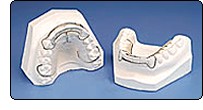 Retainers
are just as important as braces in the overall
treatment plan. There are different types of
retainers, and Dr. Shih will choose the right
one that is perfect for you. Retainers
are just as important as braces in the overall
treatment plan. There are different types of
retainers, and Dr. Shih will choose the right
one that is perfect for you.
Warning! Pets love to eat retainers! Please
take good care of your retainers and wear them
as instructed. When not in your mouth, make
sure to store them in a safe place. Be careful
not to place your retainers on lunch trays or
wrap them in napkins because you might throw
them out by mistake.
11. Why are
retainers needed after orthodontic treatment?
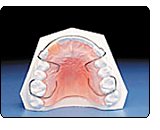 Retainers
are extremely important after orthodontic
treatment. Studies have shown that if
retainers are not worn faithfully, teeth have
a tendency to return to their original
position after orthodontic treatment. This is
called relapse. The more severe the original
bite, the greater the tendency toward relapse.
Periodontal (bone and gum) disease, mouth
breathing, and harmful tongue or oral habits
can also cause teeth to move. Retainers
are extremely important after orthodontic
treatment. Studies have shown that if
retainers are not worn faithfully, teeth have
a tendency to return to their original
position after orthodontic treatment. This is
called relapse. The more severe the original
bite, the greater the tendency toward relapse.
Periodontal (bone and gum) disease, mouth
breathing, and harmful tongue or oral habits
can also cause teeth to move.
To prevent relapse, retainers are worn after
braces are removed to support and hold the
teeth and jaws in their newly corrected
position. Retainers provide the stabilization
until the bones and gums adapt to treatment
changes. If teeth are to remain in their ideal
position, your cooperation is essential.
Wearing retainers exactly as instructed is the
best insurance that the treatment improvements
will last a lifetime.
12. Will my child's
tooth alignment change later?
 Studies
have shown that as people age, their teeth
have a tendency to shift. This variable
pattern of gradual shifting, called maturity
changes, probably slows down after the early
twenties, but still continues to a small
degree throughout life for most people. Even
children whose teeth developed into an ideal
alignment without orthodontic treatment may
develop problems as adults. Studies
have shown that as people age, their teeth
have a tendency to shift. This variable
pattern of gradual shifting, called maturity
changes, probably slows down after the early
twenties, but still continues to a small
degree throughout life for most people. Even
children whose teeth developed into an ideal
alignment without orthodontic treatment may
develop problems as adults.
The most common maturity change is crowding of
the lower incisor (front) teeth. Wearing
retainers as instructed after orthodontic
treatment will stabilize the correction.
Beyond the period of full-time retainer wear,
nighttime retainer wear can prevent
maturational shifting of the teeth. We will be
recommending special retainers and periods of
retainer wear specific to your case. Make sure
you keep appointments for retention checks and
retainer adjustments as scheduled.
13. Why do teeth
sometimes need to be removed?
On occasion, selective removal of primary
(baby) teeth may alleviate future crowding by
allowing permanent teeth to erupt in a more
desirable location and in the correct order.
Sometimes, particularly in cases of severe
crowding, permanent teeth may need to be
removed as part of your orthodontic treatment.
Tooth removal will be recommended only if it
is absolutely necessary and would improve your
prospects for successful orthodontic
treatment.
14.
What is an ankylosed tooth?
In some instances, a tooth will not move at
all because it is improperly attached to the
jawbone. This condition is called ankylosis
(pronounced ankle-o-sis). Occasionally, an
ankylosed tooth may require a minor surgical
procedure by your general (family) dentist or
specialist to allow Dr. Shih to attempt to
move it to the correct position. Sometimes,
ankylosed teeth may even have to be removed.
15. What is an
impacted tooth?
Teeth are impacted when they remain partially
or completely under the gum tissue instead of
coming into the mouth, as they should. While
impaction usually occurs when teeth are very
crowded, it can also happen for no apparent
reason. Dr. Shih will explain all available
treatment options if this situation applies to
your child.
16. Should the
wisdom teeth (third molars) be removed?
 The
most common impacted teeth are the upper and
lower third molars, also known as the wisdom
teeth. These teeth may not grow into place
properly because the jawbone does not have
sufficient room to accommodate them. In
effect, they get stuck, or trapped, below the
gums. The
most common impacted teeth are the upper and
lower third molars, also known as the wisdom
teeth. These teeth may not grow into place
properly because the jawbone does not have
sufficient room to accommodate them. In
effect, they get stuck, or trapped, below the
gums.
Careful studies have shown, however, that
wisdom teeth do not cause or contribute to the
progressive crowding of lower incisor teeth
that can develop in the late teen years and
beyond.
Dr. Shih will carefully review each situation
and at times, may recommend that your wisdom
teeth be removed. If extraction is indicated,
it will usually be recommended when a person
reaches mid to late teen years.
|
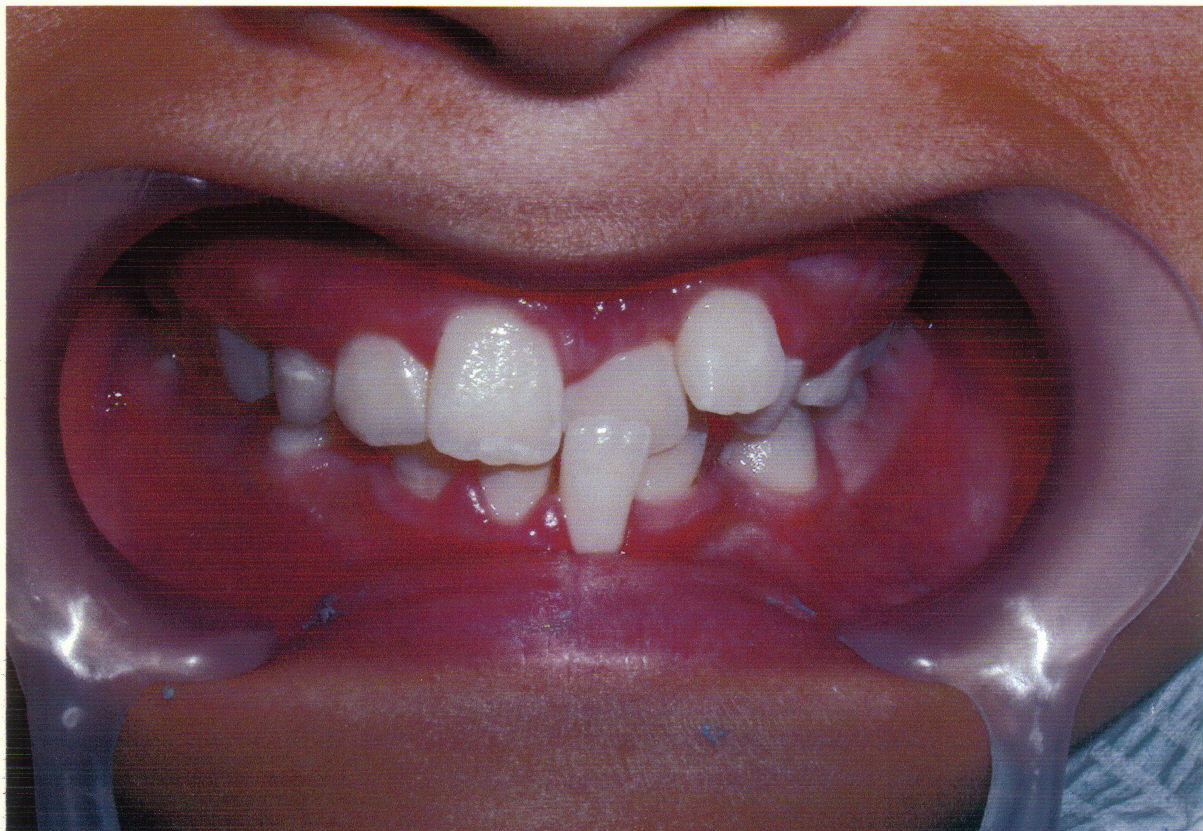



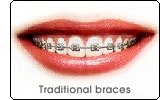
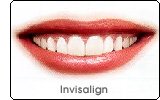
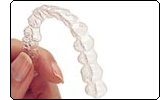
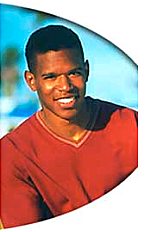 Orthodontic treatment is an excellent investment in the overall health
and psychological well-being of children and adults. This informative
web site is for patients and for parents of young patients who are
about to start a course of orthodontic treatment. It will give you an
idea of what to expect during treatment and what may be expected of
you in order to achieve the superior smile you deserve.
Orthodontic treatment is an excellent investment in the overall health
and psychological well-being of children and adults. This informative
web site is for patients and for parents of young patients who are
about to start a course of orthodontic treatment. It will give you an
idea of what to expect during treatment and what may be expected of
you in order to achieve the superior smile you deserve.


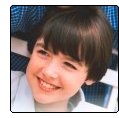
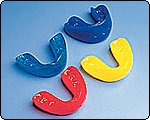

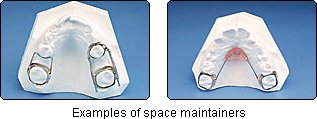
 Orthodontic
treatment and a child's growth can often
complement one another. Studies show that
orthodontic treatment during periods of
accelerated or intensive growth can contribute
significantly to correction of teeth and jaw
problems and improvement of facial appearance.
Orthodontic
treatment and a child's growth can often
complement one another. Studies show that
orthodontic treatment during periods of
accelerated or intensive growth can contribute
significantly to correction of teeth and jaw
problems and improvement of facial appearance.


 Herbst
Appliance:
Herbst
Appliance: Each
patient is a unique individual and estimates
of treatment time can only be that- estimates.
Patients grow, mature, and get their permanent
teeth at different rates and will respond in
their own individual ways to orthodontic
treatment. Rest assured that Dr. Shih has
specific treatment goals and objectives in
mind and is dedicated to continue treatment
until they are achieved. The estimated time of
treatment is usually very close to the actual
treatment time.
Each
patient is a unique individual and estimates
of treatment time can only be that- estimates.
Patients grow, mature, and get their permanent
teeth at different rates and will respond in
their own individual ways to orthodontic
treatment. Rest assured that Dr. Shih has
specific treatment goals and objectives in
mind and is dedicated to continue treatment
until they are achieved. The estimated time of
treatment is usually very close to the actual
treatment time.  When
your braces are removed, you will need to wear
a device called a "retainer" to hold your
teeth in their new position. You will wear
your retainer for as long as it takes your
teeth to settle into their new position and
for your jawbones and muscles to adapt to your
new dental arrangement. This is called the
"retention" phase of treatment. Dr. Shih may
also evaluate your wisdom teeth during this
phase of treatment.
When
your braces are removed, you will need to wear
a device called a "retainer" to hold your
teeth in their new position. You will wear
your retainer for as long as it takes your
teeth to settle into their new position and
for your jawbones and muscles to adapt to your
new dental arrangement. This is called the
"retention" phase of treatment. Dr. Shih may
also evaluate your wisdom teeth during this
phase of treatment.  Retainers
are just as important as braces in the overall
treatment plan. There are different types of
retainers, and Dr. Shih will choose the right
one that is perfect for you.
Retainers
are just as important as braces in the overall
treatment plan. There are different types of
retainers, and Dr. Shih will choose the right
one that is perfect for you.  Retainers
are extremely important after orthodontic
treatment. Studies have shown that if
retainers are not worn faithfully, teeth have
a tendency to return to their original
position after orthodontic treatment. This is
called relapse. The more severe the original
bite, the greater the tendency toward relapse.
Periodontal (bone and gum) disease, mouth
breathing, and harmful tongue or oral habits
can also cause teeth to move.
Retainers
are extremely important after orthodontic
treatment. Studies have shown that if
retainers are not worn faithfully, teeth have
a tendency to return to their original
position after orthodontic treatment. This is
called relapse. The more severe the original
bite, the greater the tendency toward relapse.
Periodontal (bone and gum) disease, mouth
breathing, and harmful tongue or oral habits
can also cause teeth to move.  Studies
have shown that as people age, their teeth
have a tendency to shift. This variable
pattern of gradual shifting, called maturity
changes, probably slows down after the early
twenties, but still continues to a small
degree throughout life for most people. Even
children whose teeth developed into an ideal
alignment without orthodontic treatment may
develop problems as adults.
Studies
have shown that as people age, their teeth
have a tendency to shift. This variable
pattern of gradual shifting, called maturity
changes, probably slows down after the early
twenties, but still continues to a small
degree throughout life for most people. Even
children whose teeth developed into an ideal
alignment without orthodontic treatment may
develop problems as adults. The
most common impacted teeth are the upper and
lower third molars, also known as the wisdom
teeth. These teeth may not grow into place
properly because the jawbone does not have
sufficient room to accommodate them. In
effect, they get stuck, or trapped, below the
gums.
The
most common impacted teeth are the upper and
lower third molars, also known as the wisdom
teeth. These teeth may not grow into place
properly because the jawbone does not have
sufficient room to accommodate them. In
effect, they get stuck, or trapped, below the
gums. 